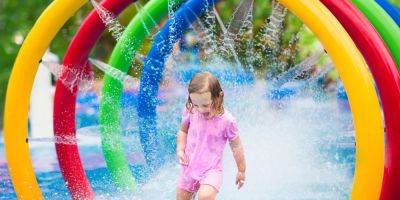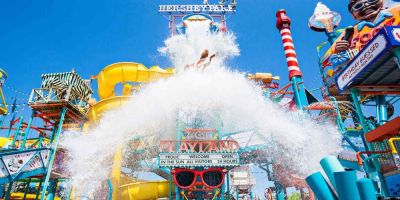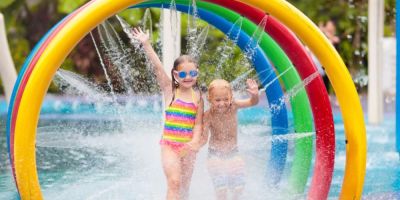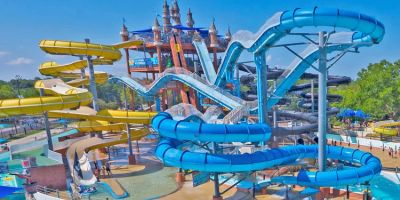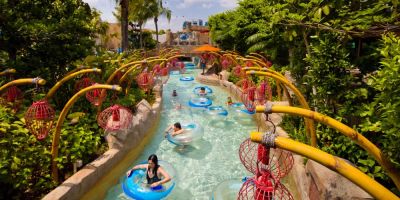
- why-water-park-guidelines-for-food-safety-matter
- core-practices-of-effective-water-park-food-safety
- case-studies-when-food-safety-failed-and-what-we-learned
- role-of-staff-training-in-maintaining-food-safety
- how-water-park-supports-safety-through-smart-solutions
1. Why Water Park Guidelines for Food Safety Matter
Water parks are synonymous with fun, sun, and splashes — but behind the excitement, there’s a serious responsibility to maintain food safety. Whether it's a quick snack from a food kiosk or a sit-down meal at a park restaurant, how food is stored, handled, and served directly impacts visitor health.
Understanding water park guidelines for food safety isn’t just for staff — it's essential knowledge for parents, guardians, and anyone who’s ever hesitated before grabbing that hot dog between rides. One mishap with contaminated food can quickly lead to illness outbreaks that compromise both guest well-being and the park's reputation.
In an environment where heat, moisture, and crowds converge, strong food safety systems are not a luxury — they are a necessity.

Rolling Hills Water Park
7660 Stony Creek Rd, Ypsilanti Township, MI 48197, USA
2. Core Practices of Effective Water Park Food Safety
2.1 Temperature Control and Safe Storage
High temperatures in summer parks make it easy for perishable food to reach unsafe levels. Water park food vendors must follow strict cold-chain practices — keeping raw foods below 5°C and cooked foods above 60°C to prevent bacterial growth.
Proper refrigeration units should be available not just behind the scenes, but also at every satellite food station. Staff should check internal food temperatures regularly and log readings during operating hours.

Grayslake Spray Park
250 Library Ln, Grayslake, IL 60030, USA
2.2 Cross-Contamination Prevention
Washing hands between handling raw and ready-to-eat foods may sound simple, but it’s a common failure point. Guidelines should require designated prep areas, color-coded utensils, and separate sinks for meats and produce.
Food contact surfaces must be sanitized regularly, and allergen management protocols should be in place to prevent accidental exposure.
2.3 Water Quality Around Food Zones
Food service zones in water parks are often near pools or splash areas. This proximity increases the risk of waterborne contamination. Guidelines must establish buffer zones, slip-resistant mats, and policies that keep wet swimsuits away from food prep counters.
Some parks now include water splashback monitoring near open kiosks to ensure safe hygiene levels are always maintained.
3. Case Studies: When Food Safety Failed and What We Learned
3.1 The Texas Water Park Salmonella Incident
In 2019, a popular water park in Texas experienced a salmonella outbreak linked to undercooked chicken wraps. Over 40 guests were hospitalized, and the park underwent state investigation. The root cause? A faulty grill thermometer and lack of final temperature checks.
Since then, many U.S. parks have upgraded to digital thermal sensors and added redundant safety checks to prevent similar mishaps.
3.2 Cross-Contact and Allergen Alert
In another case, a young child with a severe peanut allergy suffered an anaphylactic reaction after eating fries cooked in shared oil. The food stand failed to disclose cross-contact risks. After the incident, the park adopted mandatory allergen awareness training and clearer labeling for all vendors.
This highlights how food safety isn’t just about hygiene — it’s also about informed service and communication.
4. Role of Staff Training in Maintaining Food Safety
4.1 Food Handler Certification and Park-Specific Training
Every team member who handles food in a water park setting should have up-to-date food safety certification, ideally backed by national health departments. But beyond the certificate, parks need to train staff on site-specific challenges — such as outdoor service during peak heat hours or serving food near wet traffic zones.
Regular refresher courses and random safety audits can keep standards high even during the busiest days.
4.2 Scenario-Based Simulations
Some parks now conduct simulation drills — for example, a suspected food poisoning report or a power outage at a food stall. These exercises help staff make fast, informed decisions and test the effectiveness of existing food safety protocols.
5. How Water Park Supports Safety Through Smart Solutions
At Water Park, we understand that guest health is the foundation of fun. That’s why we work closely with park operators to ensure our solutions meet the highest food safety standards — from intelligent cooling stations to allergen-friendly food packaging.
We provide tailored consultation to help vendors and parks implement reliable water park guidelines for food safety, including real-time monitoring systems, staff training tools, and eco-friendly hygiene products.
If you’re seeking products or services that align with top-tier food safety standards in water park environments, Water Park is your go-to partner for smart, secure, and scalable solutions.


